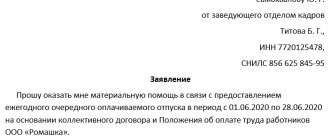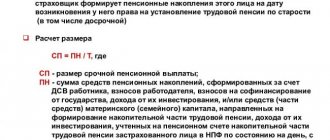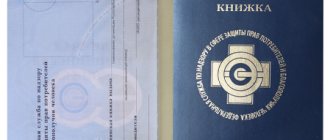The northern bonus acts as a state guarantee in the field of wages for citizens working in Russian territories with difficult natural and climatic conditions. It, together with regional coefficients, is designed to compensate in monetary form the additional physiological, psychological and material costs of a citizen while working under the influence of an unfavorable external environment. The procedure for establishing, as well as the rules for calculating northern allowances, is regulated by a large number of legislative acts, some of which were adopted back in the days of the USSR.
Legislative basis for the application of northern surcharges
According to the provisions of Part 2 of Art. 146 of the Labor Code of the Russian Federation, the work of citizens in regions with difficult natural conditions must be paid at an increased rate. The minimum amount of additional charges for such work is established by legislative acts regulating labor law standards (Article 148 of the Labor Code of the Russian Federation).
The main forms of such guarantees are (Article 315 of the Labor Code of the Russian Federation)
- regional coefficients;
- northern allowances.
The regional coefficient is established for the worker immediately upon entering work in areas with harsh natural conditions. It depends only on the region in which the workplace is located.
The northern bonus is calculated based on
- Region of employment.
- Experience working in harsh climatic conditions.
The longer an employee works in the North, the higher the premium. Its minimum size is established by the Government of the Russian Federation. Local government bodies are given the right, at the expense of local budget funds, to introduce increased coefficients and bonuses for civil servants (Part 2 of Article 316, Part 1 of Article 317 of the Labor Code of the Russian Federation).
these accruals in full as part of labor costs.
IMPORTANT!
If the place where the work is actually performed does not coincide with the territory of the employer’s location, the northern allowance is calculated according to the region where the workplace .
The general procedure for calculating the northern allowance is regulated by the legislative acts of the Russian Federation, as well as the former USSR - to the extent that they do not contradict the norms of the Labor Code of the Russian Federation (Article 423 of the Labor Code of the Russian Federation).
Will northern surcharges be abolished in the future?
Several years ago, the Government proposed to completely abolish or change the procedure for applying and calculating northern allowances and regional coefficients. But since this is an additional measure designed to compensate for difficult climatic conditions, such an initiative did not find support.
However, there are prerequisites for changing the accrual rules. These include:
- all regulations governing the procedure for applying and calculating allowances, developed and adopted back in Soviet times;
- for commercial enterprises this is an additional burden on accounting.
The unrest about the abolition of premiums and the coefficient is caused by the fact that the Government is going to pass a bill on the introduction of priority development areas. But in this law there is not a word about bonuses for northerners!
There is a possibility that amendments will be adopted to the Labor Code of the Russian Federation, which will allow replacing the amount and coefficient with monetary compensation, but only with the written consent of the employee.
In which territories are northern allowances applied and in what amount?
The list of territories with special climatic conditions is determined by the Government of the Russian Federation (Article 2 of the Law of the Russian Federation of February 19, 1993 No. 4520-1).
The maximum northern allowance in the regions of the Far North is enshrined in clause 16 of Order No. 2 of the Ministry of Labor of the RSFSR dated November 22, 1990.
In addition, an allowance is charged in some southern Far Eastern regions (resolutions of the Central Committee of the CPSU, the Council of Ministers of the USSR, the All-Union Central Council of Trade Unions dated 04/06/1972 No. 255, dated 01/09/1986 No. 53 and dated 04/11/1985 No. 298).
The list of regions where the northern allowance is valid and its maximum size is given in the table below (Resolution of the USSR Council of Ministers dated January 3, 1983 No. 12).
| AREAS OF THE FAR NORTH | Maximum surcharge percentage |
| Islands of the Arctic Ocean and its seas, as well as islands of the Bering and Okhotsk Seas | 100% |
| Chukotka Autonomous Okrug | |
| Magadan region – North Evenkiy district | |
| Kamchatka region – Koryak district, Aleutian district | |
| OTHER AREAS OF THE FAR NORTH | |
| Murmansk region, including the city of Kandalaksha with its subordinate territory | 80% |
| Arkhangelsk region: Nenets Autonomous Okrug; Severodvinsk with its subordinate territory; Mezensky, Leshukonsky, Pinezhsky | |
| Komi Republic - cities: Vorkuta and Inta with territories under administrative subordination, Pechora. Districts: Usinsky, Izhimsky, Ust-Tsilemsky, Pechora. Ust-Lyzha village | |
| Tyumen region – Yamalo-Nenets Autonomous Okrug | |
| Krasnoyarsk Territory - Taimyr (Dolgano-Nenets) and Evenki Autonomous Okrugs. The cities of Igarka and Norilsk with territories of administrative subordination. North Yenisei and Turukhansk districts. | |
| Irkutsk region – Katangsky district | |
| Saha Republic | |
| Magadan region, except for the North Evenki district | |
| Kamchatka region, except Koryak district, Aleutian district | |
| Republic of Karelia – Belomorsky, Kalevalsky, Kemsky, Loukhinsky districts, the city of Kostomuksha | |
| Khabarovsk Territory – Ayano-Maisky and Okhotsk districts | |
| Sakhalin region - Kuril, Nogliki, Okha, North Kuril and South Kuril regions, the city of Okha. | |
| Republic of Tyva - Mongun-Taiginsky, Todzhinsky districts, Shinaan rural administration of Kyzyl district | |
| Khanty-Mansiysk Autonomous Okrug – Berezovsky, Beloyasrsky districts | |
| AREAS EQUALIZED TO AREAS OF THE FAR NORTH | |
| Arkhangelsk region - Plesetsk, Primorsky, Onega, Kholmogorsky, Vinogradovsky, Verkhnetoemsky, Lensky, Velsky Kotlas, Krasnoborsky, Nyandoma, Ustyansky, Shenkursky districts. Cities of Novodvinsk, Onega, Kotlas, Koryazhma | 50% |
| Komi Republic - Vuktylsky, Sosnogorsky, Troitsko-Pechora, Udora, Knyazhpogostsky, Koygorodsky, Kortkerossky, Priluzsky, Syktyvdinsky, Sysolsky, Ust-Vymsky, Ust-Kulomsky districts. The cities of Ukhta and Syktyvkar. | |
| Komi-Permyak Autonomous Okrug – Gainsky, Kosinsky, Kochevsky districts | |
| Republic of Karelia – Muezersky, Segezhsky, districts, cities of Petrozavodsk and Sortavala. | |
| Tyumen region - Uvat district. | |
| Khanty-Mansi Autonomous Okrug, except Berezovsky and Beloyarsky districts | |
| Tomsk region - Aleksandrovsky, Bakcharsky, Verkhneketsky, Kargasoksky, Kolpashevo, Krivosheinsky, Molchanovsky, Parabelsky and Chainsky districts. Cities: Kolpashevo and Strezhevoy, municipal formation “Kedrovy City” (Kedrovy city, Pudino village, Ostanino, Kalininsk, Rogalevo, Tavanga, Lushnikovo villages) | |
| Krasnoyarsk Territory - Boguchansky, Yenisei, Kezhemsky and Motyginsky districts. Cities: Yeniseisk and Lesosibirsk with subordinate territory. | |
| Irkutsk region - Bodaibinsky, Bratsky, Kazachinsko-Lensky, Kirensky, Mamsko-Chuysky, Nizhneilimsky, Ust-Ilimsky and Ust-Kutsky districts. The cities of Bodaibo, Ust-Ilimsk, Ust-Kut, Brastk. | |
| Republic of Buryatia - Bauntovsky and North Baikal, Kurumkansky, Muisky and Okinsky districts. | |
| Chita region - Kalarsky, Tungiro-Olekminsky, Tungochensky districts. | |
| Amur region - Zeya, Selemdzhinsky and Tyndinsky districts. The cities of Zeya and Tynda with the territory of administrative subordination. | |
| Primorsky Territory - Dalnegorsky, Kavalerovsky, Olginsky, Terneysky districts. Workers' settlement Vostok, Boguslavetsky, Vostretsovsky, Dalnekutsky, Izmailikhinsky, Melnichny, Roshchinsky and Taezhnensky village councils of the Krasnoarmeysky district | |
| Khabarovsk Territory - Vaninsky, Verkhnebureinsky, Komsomolsky, Nikolaevsky, named after Polina Osipenko, Sovetsko-Gavansky, Solnechny, Tuguro-Chumikansky and Ulchsky districts. The cities of Amursk, Komsomolsk-on-Amur, Nikolaevsk-on-Amur and Sovetskaya Gavan. Workers' settlement Elban, Voznesensky, Padalinsky, Achansky, Dzhuensky, Omminsky village councils of the Amur region. | |
| Sakhalin region - all areas, with the exception of areas listed in the list of regions of the far north | |
| Republic of Tyva - Bai-Taiginsky, Barun-Khemchiksky, Dzun-Khemchiksky, Kaa-Khemsky, Kyzylsky (except for the territory of Shynaan rural administration), Ovursky, Piy-Khemsky, Sut-Kholsky, Tandinsky, Tes-Khemsky, Chaa-Kholsky, Chedi -Kholsky, Ulug-Khemsky, Erzinsky districts. Kyzyl. | |
| Republic of Gorny - Kosh-Agach and Ulagansky districts: | |
| OTHER AREAS IN WHICH A SUPPLEMENT IS ESTABLISHED | |
| Arkhangelsk region and the Komi Republic, with the exception of areas related to the Far North | 30% |
| Southern regions of the Irkutsk region and Krasnoyarsk Territory | |
| The Republic of Buryatia | |
| Tyva Republic | |
| Chita region |
Regulatory framework
The main legislative act, according to which workers in the North and other territories with difficult conditions have the right to receive an additional payment to their salary, is the Labor Code (Chapter 50). Along with this, the procedure for calculating northern allowances, their size and other issues are reflected in the following regulatory and legislative acts (some of them were adopted during the existence of the Soviet Union, but have not yet been canceled and continue to be in effect):
- Law of the Russian Federation No. 4520-1 “On state guarantees and compensation for persons working and living in the RKS and equivalent areas” (02/19/1993);
- Decree of the Presidium of the USSR Armed Forces No. 1908-VII (09/26/1967);
- Order of the Ministry of Labor of the RSFSR No. 2 (11/22/1990);
- Resolution of the Central Committee of the CPSU, the Council of Ministers of the USSR and the All-Union Central Council of Trade Unions No. 255 (04/06/1972);
- Resolution of the Central Committee of the CPSU, the Council of Ministers of the USSR and the All-Union Central Council of Trade Unions No. 53 (01/09/1986).
- Will there be a credit amnesty for Russians?
- Which stores offer pensioners discounts on their Muscovite social cards?
- Determining the region by mobile phone number using an online service, directory or USSD request
The procedure for calculating length of service for bonuses
For employees, the northern bonus is calculated depending on the total time they worked in the respective regions. In addition to the time of direct work, in order to determine the bonus, the following are taken into account:
- a period of off-the-job training, but not more than 6 months, including in territories where the bonus is not provided;
- time of student practical training;
- days spent at military training;
- the period from the moment of illegal dismissal to reinstatement at work by a court decision, recognized as forced absenteeism;
- time spent performing alternative service, including in areas where bonuses are not provided;
- periods of military service or service in the Ministry of Internal Affairs in regions with a difficult climate, provided that the dismissal occurred upon reaching the age limit, for health reasons or in connection with organizational and staffing measures.
The periods of fulfillment of labor duties are summed up regardless of the time of breaks in work and the grounds for termination of the employment contract (determination of the RF Armed Forces dated December 23, 2004 No. KAS04-596).
IMPORTANT!
The period not taken into account for northern work experience is the time of correctional work.
Also, for calculation purposes, the time when an individual:
- performed work under civil contracts;
- was engaged in entrepreneurial activities and was registered as an individual entrepreneur.
If an employee is transferred from one region of the Far North to another, in which a bonus is established, it must be recalculated according to the rules in force at the last place of work - according to the proportion of time worked in different territories.
For employees working on a rotational basis, a special procedure for calculating length of service for northern bonuses is established (Article 302 of the Labor Code of the Russian Federation).
IMPORTANT!
The period of parental leave is also included in the length of service for calculating northern bonuses (clause 7 of the resolution of the USSR State Committee for Labor, the Secretariat of the All-Union Central Council of Trade Unions dated November 29, 1989 No. 375/24-11).
How to confirm your right to receive the northern bonus
If we are talking about a regional coefficient, then the right to use it does not need to be confirmed - it is granted automatically based on information about the place of residence in the corresponding region. Northern experience does not affect this in any way.
But in order to receive an increased fixed bonus, you must provide a certificate from your place of work (it can be issued in any form), as well as a work book. In some cases, both documents are required.
If you work in the Far North or equivalent areas, check that your work registration is correct. This is especially true in situations where the head office of the employing company is registered, for example, in Moscow, Krasnodar or Ryazan, but in reality they have to work in the Far North. It is important that this fact is recorded in the work record book or confirmed by an appropriate certificate.
How to calculate the size of the northern allowance
The main documents defining the procedure for why and how northern bonuses are calculated are as follows:
- Resolution of the Council of Ministers of the RSFSR dated October 22, 1990 No. 458;
- instructions approved by orders of the Ministry of Labor of the RSFSR dated November 22, 1990 No. 2 and No. 3.
According to these documents, there are two options for calculating the amount of the premium:
- For employees over 30 years of age.
- For employees under 30 years of age.
How the bonus is calculated for work in the Far North, depending on the length of service and age of the employee, is explained in the table below.
IMPORTANT!
Until December 31, 2004, rules were in force that allowed the immediate establishment of the maximum bonus for employees under 30 years of age who had lived in the North for more than 5 years from the first day of work (Article 11 of the Law of the Russian Federation of February 19, 1193 No. 4520-1). However, as of January 1, 2005, this procedure was canceled and is no longer applied (Federal Law of August 22, 2004 No. 122-FZ).
If an employee moves from an area with one allowance to another, where a different amount of allowance applies, special recalculation rules apply. How to calculate the northern surcharge in such a case is described in the table below.
The previously earned bonus is calculated by the new employer based on the work record data. He can also provide the resigning employee with a certificate of the northern allowance, the sample of which is not fixed by law. However, this is not a mandatory document. In practice, companies may not issue it.
Recalculation of allowances when moving from region to region
In practice, there may be cases when an employee moves between regions with different levels of northern allowances. In this case, regulations require their recalculation in proportion to the length of service earned in different regions. To do this, use the following algorithms (clause 20 of Instructions No. 2):
- When moving from the Far North regions to regions equated to them, 10% is charged for every 12 months of work.
EXAMPLE 1
The employee is under 30 years of age. He worked in Norilsk for 3 years and 6 months and got a job in the Sakhalin region. How to calculate his bonus?
The employee will immediately receive: 3 years x 10% = 30% and 6 months / 10 months x 10% = 5%.
That is, he is entitled to a 35% bonus. Then - after six months - he will receive 45%, and after another 3 months - 50%.
- If there is a transition from regions equated to the North to the territory of the Far North, the bonus is retained for full years of work, and for months worked in excess of full years, it is calculated in proportion to 12 months.
EXAMPLE 2
An employee under 30 years of age worked in the Sakhalin region for 3 years and 6 months and got a job in Norilsk. How to calculate his bonus?
An employee under 30 years of age. Consequently, he receives a bonus of 50% for 3 years of work (10% every six months). It remains with him. Next, the employee will receive 10% after 3 months, and then receive 20% per year until reaching 80%.
- If an employee moves from other regions of Siberia and the Far East, where an allowance of up to 30% is established in the territory of the Far North and equivalent to them, the already accrued northern allowances are retained for him. If the amount of the earned bonus is less than 30%, then the periods worked after accrual of 10% or 20% are counted in the proportion: 1 year for 3 months in the Far North, 1 year for 6 months in a region equated to the North. Next, the bonus is calculated according to the rules of the last region of work.
EXAMPLE 3
An employee over 30 years old worked in the south of the Irkutsk region for 4 years and earned a 20% bonus (due after 3 years of work). He transferred to the Komi Republic, a territory equated to the Far North.
The employee retains 20%, and the year worked is counted as 6 months of service. To receive the next 10%, the employee needs to work another 6 months.
- If an employee is transferred from the regions of the Far North and equivalent regions to other regions of the south of Siberia and the Far East, he is credited with 10% for the first year of work and 10% for each subsequent 2 years of service in the North (clause 11 of Instruction No. 3).
From what payments should the northern allowance be calculated?
The bonus is calculated from the amount of all remunerations paid in connection with the performance of labor duties (Resolution of the Ministry of Labor of Russia dated September 11, 1995 No. 49).
The allowance is calculated for the following payments:
- the constant part of the salary - salary, hourly tariff rate, accruals at piece rates;
- incentive payments (bonuses, incl. annual) related to work;
- additional payments and allowances - for night work, for length of service, for professional excellence, for expanding the service area.
Supplements are not accrued for:
- the sum of the regional coefficient;
- one-time bonuses not related to the performance of job duties and not provided for by the company’s current remuneration system;
- material assistance;
- average earnings retained by the employee in cases provided for by law (vacation, sick leave, business trip);
- the amount of field allowance.
Let's give an example of how the northern allowance is calculated.
EXAMPLE
The employee is entitled to a northern bonus of 30%. He was accrued: salary - 20,000 rubles, monthly bonus - 15,000 rubles, additional payment for length of service - 2,000 rubles, financial assistance in the amount of 6,000 rubles. Let's calculate the amount of the premium.
We do not take financial assistance into account.
Then we get:
(20,000 + 15,000 + 2000) x 30% = 11,100 rubles.
The procedure for calculating the allowance
The salary bonus for work in the Far North is calculated from the day the employee becomes entitled to it. For part-time employees working in the organization, accrue percentage bonuses for length of service in the Far North regions in the same way as other employees (Part 3 of Article 285 of the Labor Code of the Russian Federation).
Calculate the bonus on the employee’s actual earnings (clause 1 of the clarification approved by Resolution of the Ministry of Labor of Russia dated September 11, 1995 No. 49). Do not apply a surcharge:
- to the regional coefficient;
- for payments based on average earnings (for example, vacation pay, payment for business trips, etc.);
- for financial assistance;
- for payments that are of a one-time incentive nature and not determined by the remuneration system (bonuses for anniversaries, holidays, etc.).
This approach is confirmed by paragraph 19 of the Instruction, approved by order of the Ministry of Labor of the RSFSR dated November 22, 1990 No. 2, and by the decision of the Supreme Court of the Russian Federation dated December 1, 2015 No. AKPI15-1253.
If bonuses are paid based on the results of work for any period, the amount of this bonus for calculating bonuses is distributed over the months of the reporting period in proportion to the time worked. This distribution is necessary for the correct calculation of the northern bonus on the premium amount. When calculating a bonus on the bonus amount for a quarter, half a year, etc., be guided by the following. Apply the amount of the premium that is established for the month of the reporting period to which the premium amount relates.
This is established by paragraph 19 of the Instruction, approved by order of the Ministry of Labor of the RSFSR dated November 22, 1990 No. 2, and paragraph 7 of the Instruction approved by order of the Ministry of Labor of the RSFSR dated November 22, 1990 No. 3.
Situation: how to calculate the bonus for working in the Far North for a quarterly bonus? The bonus does not depend on the time worked. The employee had business trips during the quarter.
To calculate the bonus, distribute the quarterly bonus for each month in proportion to the time worked in that month. This is stated in paragraph 19 of the Instruction, approved by order of the Ministry of Labor of the RSFSR dated November 22, 1990 No. 2, and paragraph 7 of the Instruction approved by order of the Ministry of Labor of the RSFSR dated November 22, 1990 No. 3.
In the number of days worked, include days of business trips, if this is provided for by a local act of the organization (for example, Regulations on Business Travel). After all, being on a business trip is working time (Articles 91 and 166 of the Labor Code of the Russian Federation).
An example of calculating a bonus for working in the Far North for a quarterly bonus. During the quarter for which the bonus was accrued, the employee had business trips
The Alpha organization is located in Murmansk (a region of the Far North).
I.A. Ivanov (b. 1978) has been working at Alpha since June 1, 2015. His salary is 20,000 rubles. Ivanov’s bonus, taking into account his length of service, is 10 percent. From December 1, 2015, the bonus based on length of service is 20 percent.
In December 2015, Ivanov was awarded a bonus for the fourth quarter of 2015 in the amount of 30,000 rubles. From October 5 to October 9, Ivanov was on a business trip. The salary for the business trip based on average earnings was 4597.70 rubles. Payment for the remaining working days of October amounted to 15,454.53 rubles.
To calculate the regional allowance, the accountant determined the amount of time worked in each month, while, according to the Regulations on business trips, business trip days are not excluded from working hours:
- October – 22 working days;
- November – 20 working days;
- December – 23 working days.
Next, the accountant distributed the bonus by month:
- 30,000 rub. × 22 days : 65 days = 10,153.85 rub. – for October;
- 30,000 rub. × 20 days : 65 days = 9230.77 rub. – for November;
- 30,000 rub. × 23 days : 65 days = 10,615.38 rub. - for December.
Having distributed the bonus by month, the accountant calculated a percentage premium in the following amounts:
- for the part of the premium falling on October - 1015.39 rubles. (RUB 10,153.85 × 10%);
- for the part of the premium falling on November - 923.08 rubles. (RUB 9,230.77 × 10%);
- for the part of the premium falling on December - 2123.08 rubles. (RUB 10,615.38 × 20%).
An example of calculating an allowance for work experience in the Far North. The employee got a job in the middle of the month
Alpha LLC is located in Murmansk (region of the Far North).
E.V. Ivanova got a job as a secretary at Alpha on January 21, 2015. Before this, she had no work experience in the Far North (or equivalent areas). The employee's salary is 13,000 rubles. Ivanova became entitled to the first increase of 10 percent on July 21, 2015.
July 2015 Ivanova worked completely. For this month she was accrued:
- salary of 13,000 rubles;
- additional payment for combining positions in the amount of 1600 rubles;
- regional coefficient in the amount of 10,400 rubles;
- a one-time bonus in the amount of salary (not provided for by the remuneration system).
The accountant did not accrue a percentage bonus for salaries from July 1 to July 20. A percentage increase was accrued on the amount of salary and additional payment for combining positions for the period from July 21 to July 31 (9 working days). No allowance is accrued for the regional coefficient and for bonuses not provided for by the remuneration system.
In July 2015 there are 23 working days. Ivanova’s percentage bonus for work experience in the Far North for July 2015 was: (RUB 13,000 + RUB 1,600): 23 days. × 9 days × 10% = 517.30 rub.
An example of calculating an allowance for work experience in the Far North. The bonus is calculated on the quarterly bonus
Alpha LLC is located in Murmansk (region of the Far North).
I.A. Ivanov (b. 1981) has been working at Alpha since July 1, 2015. His salary is 13,000 rubles. At the time of joining, Ivanov had a year and 1 month of work experience in the Far North (the bonus was 20 percent). From December 1, 2015, Ivanov’s bonus was increased to 30 percent.
In December 2015, Ivanov was awarded a bonus for the fourth quarter of 2015 in the amount of 10,000 rubles.
To calculate the percentage bonus, the Alpha accountant distributed the bonus amount across the months of the reporting period in proportion to the time worked. During the fourth quarter of 2015, Ivanov worked 65 working days, of which:
- in October – 22 working days;
- in November – 20 working days;
- in December – 23 working days.
The award amount was distributed as follows:
- the part of the bonus attributable to October amounted to RUB 3,384.62. (RUB 10,000 × 22 days: 65 days);
- the portion of the premium due in November amounted to RUB 3,076.92. (RUB 10,000 × 20 days: 65 days);
- the part of the premium attributable to December amounted to RUB 3,538.46. (RUB 10,000 × 23 days: 65 days).
After distributing the bonus, the accountant added a percentage premium on it, valid in the corresponding month. The percentage increase on the quarterly bonus was accrued in the following amounts:
- for the part of the premium falling on October - 676.92 rubles. (RUB 3,384.62 × 20%);
- for the part of the premium falling on November - 615.38 rubles. (RUB 3,076.92 × 20%);
- for the part of the premium falling on December - 1061.54 rubles. (RUB 3,538.46 × 30%).
The amount of the percentage premium accrued on the quarterly bonus was: 676.92 rubles. + 615.38 rub. + 1061.54 rub. = 2353.84 rub.
An example of calculating an allowance for work experience in the Far North. The bonus is paid to an employee under 30 years of age
Alpha LLC is located in Murmansk (region of the Far North).
I.A. Ivanov (b. 1989) got a job as a worker at Alpha on December 11, 2013. His salary is 8,000 rubles. This is his first job. At the time of joining Alpha, Ivanov was 24 years old. Before starting work, he did not live in the Far North.
When calculating the salary for the first month of work (December 2013), the accountant did not accrue any allowances to Ivanov, since he did not have the necessary experience.
The first percentage increase was accrued to Ivanov in June 2014, six months after the start of work. Since by June 2014 Ivanov had been living in the Far North for less than a year, he did not have the right to accrue an increased interest rate (20%). An interest surcharge was charged at 10 percent.
In June 2014 there are 19 working days. Ivanov’s right to a percentage increase (10%) arose on June 11, 2014. The allowance was accrued for 12 working days in the following amount: 8,000 rubles. × 12 days : 19 days × 10% = 505.26 rub.
From December 11, 2014, the interest rate was increased by 10 percent. In December 2014, the accountant calculated the premium at two rates: 10 percent from December 1 to 10 (8 working days) and 20 percent from December 11 to 31 (15 working days). There are a total of 23 working days in December 2014. The amount of the bonus was: 8,000 rubles. × 8 days : 23 days × 10% + 8000 rub. × 15 days : 23 days × 20% = 1321.74 rub.
Ivanov’s age as of December 11, 2014 is 25 years old. By this time, he had lived in the Far North for 1 year. Therefore, he must receive the next percentage increase in an increased amount. From June 11, 2015, he is entitled to a 40 percent increase.
In June 2015 – 21 working days (June 12 is a non-working holiday). For 8 working days (from June 1 to June 10), the premium is charged in the amount of 20 percent, for 13 working days (from June 11 to June 30) - in the amount of 40 percent. The amount of the interest increase for June 2015 for Ivanov was: 8,000 rubles. × 8 days : 21 days × 20% + 8000 rub. × 13 days : 21 days × 40% = 2590.47 rub.
An example of calculating an allowance for work experience in an area equated to the regions of the Far North. The bonus is paid to an employee under 30 years of age
Alpha LLC is located in the Tyumen region (an area equated to the regions of the Far North).
I.A. Ivanov (b. 1989) got a job as a worker at Alpha on September 11, 2013. His salary is 8,000 rubles. This is his first job. At the time of joining Alpha, Ivanov was 24 years old.
Before starting work, he lived in this area for two months (since July 11).
When calculating wages for the first 10 months of work, the accountant did not accrue any allowances to Ivanov, since he did not have the necessary experience. Since when working in an area equated to the regions of the Far North, allowances are awarded on a general basis only after a year of work. And the bonus for employees under the age of 30 is accrued after six months of work, but provided that the employee lives in the area for at least a year. During the first 10 months of work, Ivanov did not meet the conditions for calculating bonuses.
Ivanov’s six months of work in the organization expired on March 11, 2014. From this moment on, an employee under 30 years of age has the right to receive a bonus. However, on this date, the second condition was not met - about annual residence in this area.
Therefore, the first percentage increase was accrued to Ivanov only from July 11, 2014 (after the first year of residence in the area) in the amount of 10 percent.
There are a total of 23 working days in July 2014. The bonus was accrued for the period from July 11 to July 31 (15 working days).
The amount of the bonus was: 8,000 rubles. × 15 days : 23 days × 10% = 521.74 rub.
He must receive the next percentage increase after 12 months from the start of work (six first and six subsequent months of work). That is, from September 11, 2014, he is entitled to a 20 percent bonus.
There are 22 working days in September 2014. For 8 working days (from September 1 to September 10 inclusive) the premium is charged in the amount of 10 percent, for 14 working days (from September 11 to September 30 inclusive) - in the amount of 20 percent.
The amount of the percentage increase for September 2014 for Ivanov was: 8,000 rubles. × 8 days : 22 days × 10% + 8000 rub. × 14 days : 22 days × 20% = 1309.09 rub.
From March 11, 2015 (in another six months), the premium will be 30 percent.
There are 21 working days in March 2015. For 6 working days (from March 1 to March 10 inclusive) the premium is charged in the amount of 20 percent, for 15 working days (from March 11 to March 31 inclusive) - in the amount of 30 percent.
The amount of the interest increase for March 2015 for Ivanov was: 8,000 rubles. × 6 days : 21 days × 20% + 8000 rub. × 15 days : 21 days × 30% = 2171.43 rub.
In the future, the allowance will continue to increase by 10 percent every six months until it reaches 50 percent of earnings.










